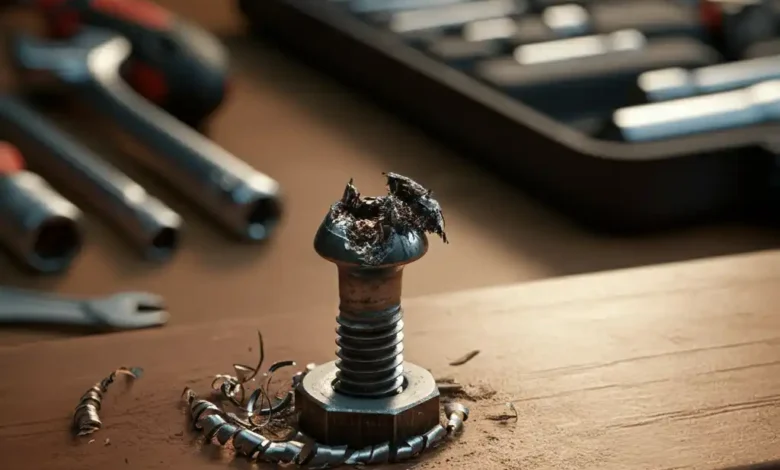How to Remove a Stripped Screw

There’s been a time when we stared at a stout broken screw that is refusing to let go. Don’t fret you can get that screw removed is simpler than you’d think! When it’s furniture an DIY task, or just a quick renovation around your home The experts at HGTV have your back with straightforward efficient methods for tackling the gruelling task.
This is how to remove the screw that has been stripped in a short time.
1. Switch to a Rubber Band
Sometimes all you require is a little extra grip!
- Find a long rubber band and put it on top of the screw you have stripped.
- Make sure you press the screwdriver (flathead or Phillips depending upon the type of screw) into the rubber band. Slowly rotate the band.
The rubber band creates the right amount of friction to assist the screwdriver to grip the screw before twisting it around.
Pro Tip:
Be sure to apply a constant tension while turning the screw in order to prevent any further harm.
2. Try a Screw Extractor Kit
If you have screws that really are stuck the screw extractor kit can be a lifesaver.
- Screw extractors are made to hold and snare to remove broken screws.
- Create a pilot hole through the screw stripped. Insert the extractor, then turn it using a screwdriver or wrench.
They’re cheap, simple to use and are an essential tool for each DIY-er.
3. Use Pliers for Extra Leverage
In the event that the screw’s head sticks out, the pliers will perform the job.
- Find a pair or lock pliers, needle-nose pliers, or locking pliers and securely secure them on the head of a screw.
- Simply twist the screw counterclockwise until it is removed.
This is the best method to use if there’s plenty of screw to be seen for it to hold onto.
4. Drill It Out
In extreme situations where alternative options don’t work out Drilling out the screw can be a last option.
- Make use of a drill that has the shaft slightly larger than the shaft of the screw.
- Be sure to drill the hole in the middle of the screw and break it into pieces to take the parts off.
Make sure you take your time and avoid harming the surface around you.
5. Use a Metal File
If the head of the screw isn’t enough to use a screwdriver, but functional, you can make a brand new grip!
- Make use of a file made from metal to flatten the opposite side on the screws head.
- Place an adjustable wrench on the edges of the blade, and gently twist it.
6. Make a tap and turn using a Hammer
Hammers can help unwind a screw that’s held tightly.
- Place your screwdriver in the screw that has been stripped.
- Tap the side of the screwdriver with the hammer and force it into the screw further.
- Turn the screwdriver slowly at a steady speed, while ensuring the pressure.
7. Apply Heat to Loosen Tough Screws
The screws that are stuck because of rust or adhesive usually require some heat to help loosen them up.
- Utilize a heating gun or a soldering tool for applying heat directly onto the screw for several minutes.
- When it’s hot (but not so hot that it is difficult to be handled) then use the screwdriver or the pliers to take it off.
Caution:
Careful when applying heating to ensure that you do not damage the surfaces or materials around you.
8. Get Some Grip Paste
If you’re faced with a particular tough screw you can try using a grip paste (available in hardware shops).
- Make sure you apply a little paste onto the screwdriver’s tip as well as the screw head.
- The paste improves friction which makes it easier to hold and turn the screw.
Final Thoughts
A damaged screw shouldn’t be able to be a problem for your work! Utilizing these straightforward methods to remove the hardest-to-remove screws, without breaking a sweat.
It’s time for you to test these methods on the examination! To ensure success, you must ensure you’re using correct tools and applying consistent tension.
Also Read: Expert Guide to Hedge Trimmers